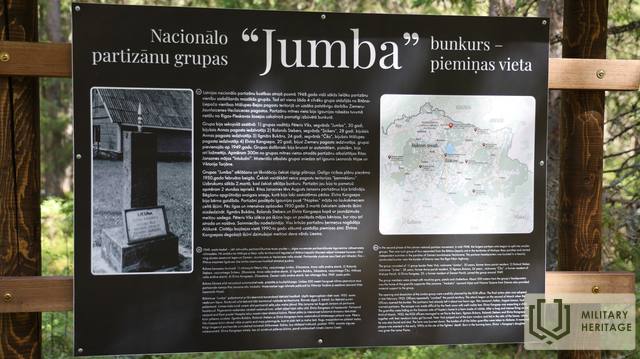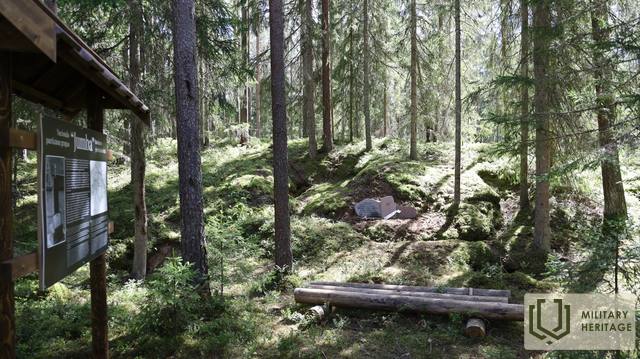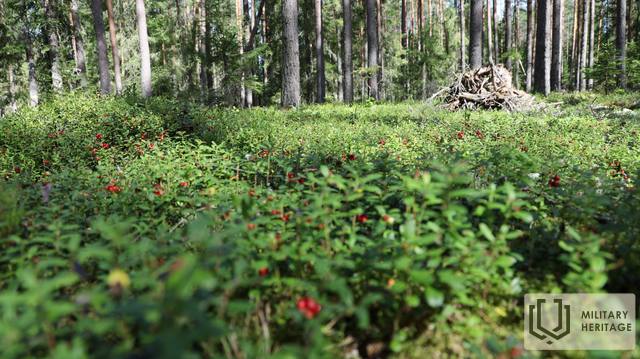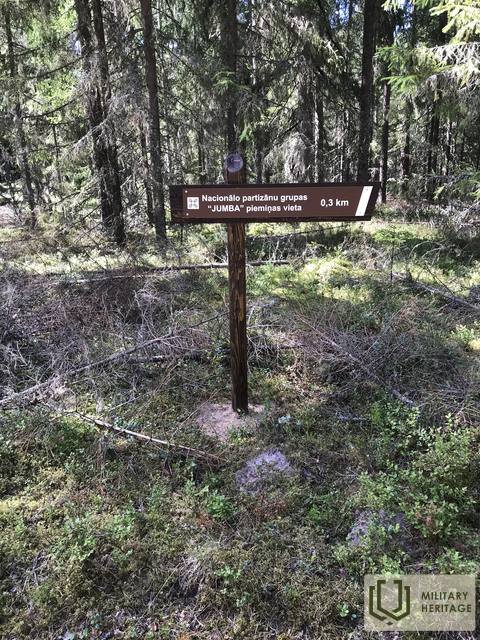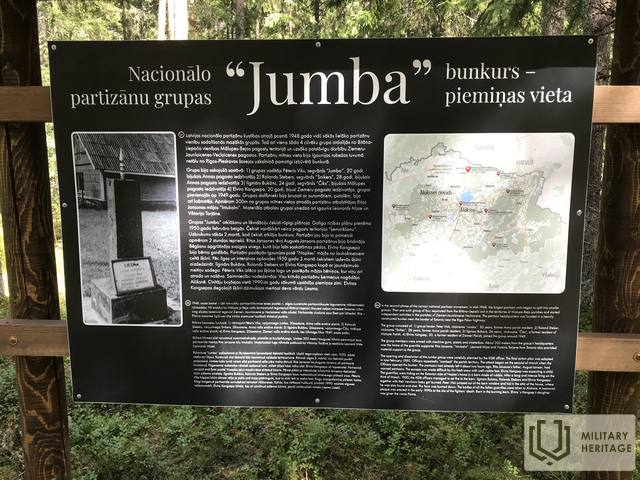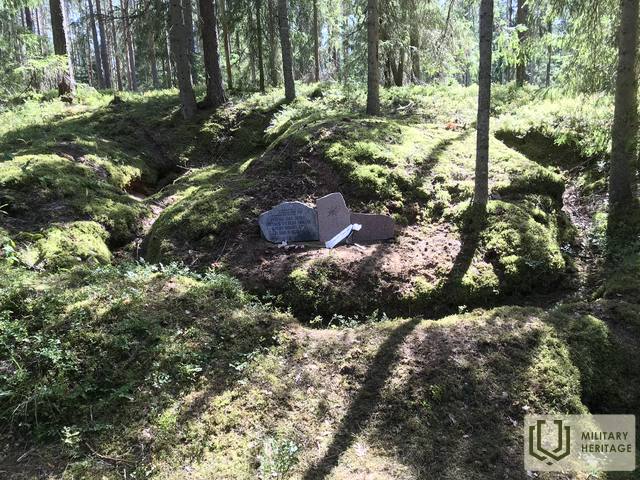Memorial site of the bunker of the national partisan group “Jumba”
Memorial site
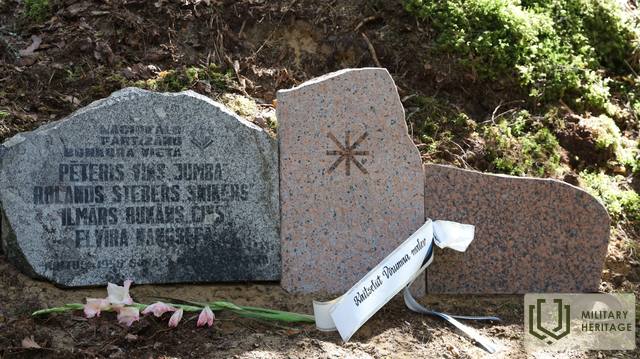

Located in Ziemers parish, in the 66th block of the State Forest.
The memorial was opened on July 10, 2020.
In the second stage of the Latvian national partisan movement, in mid-1948, a group of 4 people - Viks Pētersi, Stebers Rolands, Bukāns Ilgmārs and Kangsepa Elvīra separated from the J. Bitāns-Liepačs unit in the territory of Mālupē-Beja parishes and began independent activities in Ziemera-Jaunlaicene-Veclaicene parishes. The partisan headquarters was near the Estonian border, not far from the Riga-Pskov highway, on a hill, in a well-built bunker.
On March 2, 1950, when the Chekists discovered the bunker, the partisans hid in a barn built of boulders in the “Napke” house on the Estonian side. After a long and intense firefight, on March 3, 1950, the Chekists managed to set the barn on fire. Ilgmārs Bukāns, Rolands Stebers, and Elvīra Kangsepa burned to death along with their newborn daughter. Pēteris Viks jumped out of the barn window and hid in the attic of the house, where he was found and shot. The farm was burned down. The bodies of all the fallen partisans were taken to Alūksne. A memorial sign was erected at the site of the fighters’ deaths in the early 1990s. Elvīra Kangsepa’s daughter, who was born in the burning barn, was named Liesma.
Used sources and references:
In 2015, the head of the politically repressed club “Sarma” in Alūksne and Ape regions, Dzidra Mazika, and the club members, updated the research on the activities of the participants of the national resistance movement in Alūksne and Ape regions. As part of this cycle of events, the sites of partisan activity were investigated, photo and video recording was taken, eyewitness memories were recorded, these sites were cleaned up, memorial sites were created and opened. Active participants in the research on the activities of the National Resistance Movement were: Dzidra Mazika, head of the politically repressed club “Sarma” in Alūksne and Ape regions; historian Astrīda Ievedniece, veterans of the 31st battalion of the National Guard and Chief Juris Ločs, as well as the Alūksne region municipality.






